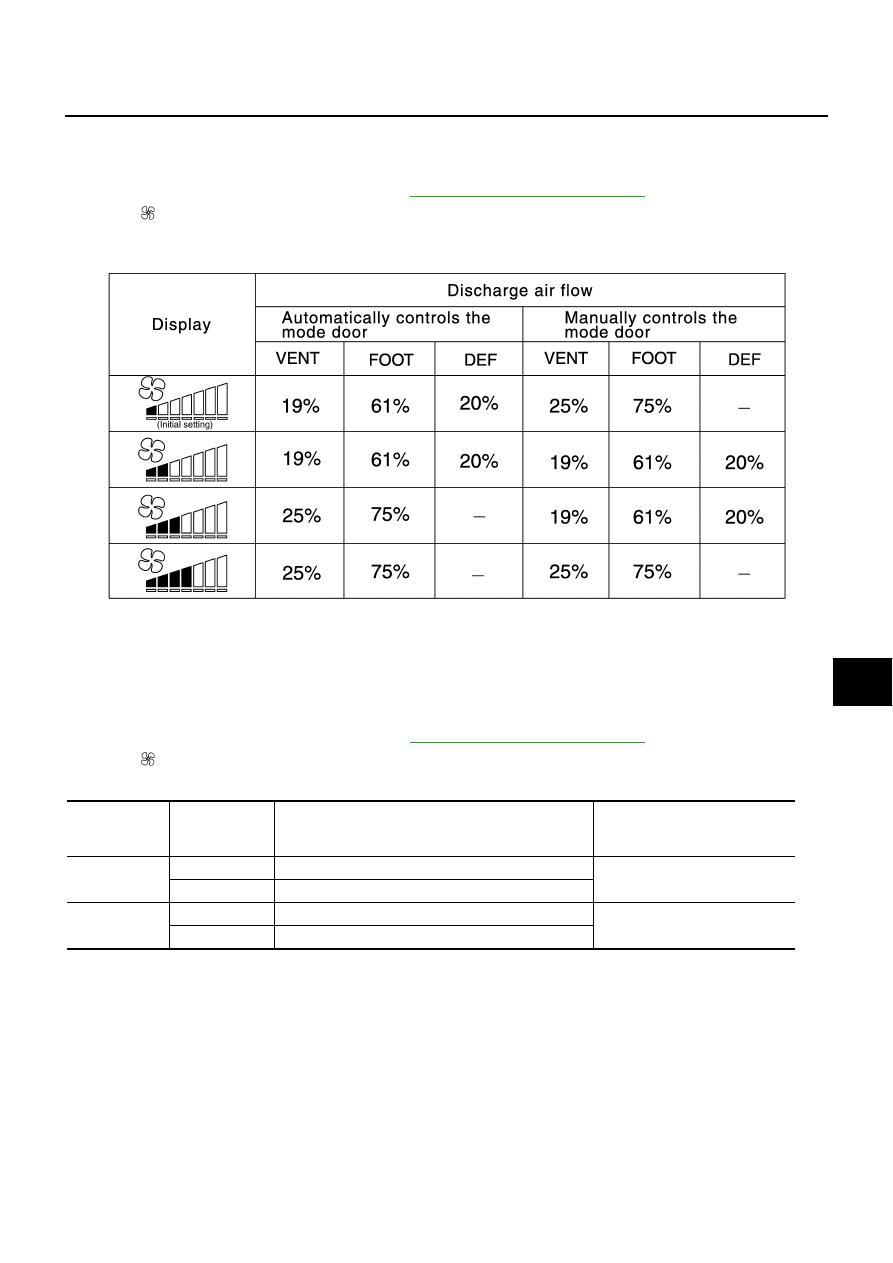Infiniti G35 (V35). Manual - part 97

TROUBLE DIAGNOSIS
ATC-59
C
D
E
F
G
H
I
K
L
M
A
B
ATC
AUXILIARY MECHANISM: FOOT POSITION SETTING TRIMMER
Wind distribution ratio in FOOT mode can be set.
Operating procedures for this trimmer are as follows:
1.
Begin self-diagnosis STEP-5 mode. Refer to
ATC-51, "Self-diagnosis Function"
.
2.
Press (fan) UP switch to set system in auxiliary mode.
3.
Display shows “61” in auxiliary mechanism. It takes approximately 3 seconds to enable setting operation.
4.
Press the mode switch as desired.
When battery cable is disconnected or battery voltage is below 10 V, trimmer operation is canceled. Wind dis-
tribution ratio set becomes that of initial condition.
AUXILIARY MECHANISM: INLET PORT MEMORY FUNCTION
When ignition switch is turned from OFF to ON, inlet port memory function at manual mode can be set.
Operating procedures for this trimmer are as follows:
1.
Begin self-diagnosis STEP-5 mode. Refer to
ATC-51, "Self-diagnosis Function"
.
2.
Press (fan) UP switch to set system in auxiliary mode.
3.
Press the recirculation (REC) and fresh (FRE) switch as desired.
When battery cable is disconnected or battery voltage is below 10 V, memory function is canceled. Memory
function set becomes that of initial condition.
RJIA3487E
Switch
LED status of
REC/FRE
switch
Setting status
Setting changeover method
REC
ON
Manual REC status is memorized. (Initial setting)
REC SW: ON
OFF
AUTO control
FRE
ON
Manual FRE status is memorized.
FRE SW: ON
OFF
AUTO control (Initial setting)